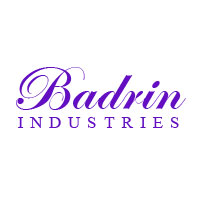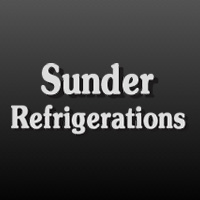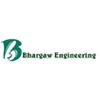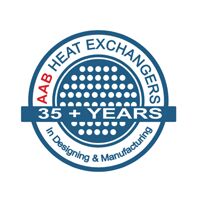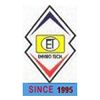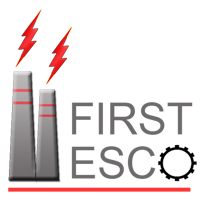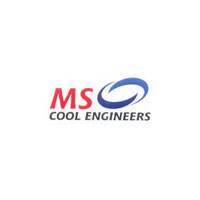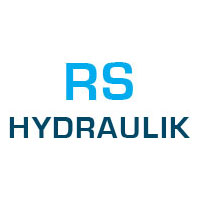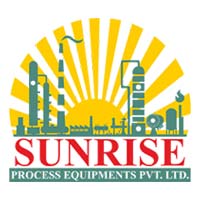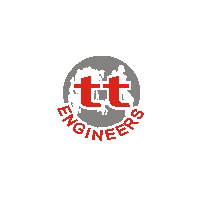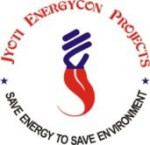Top Suppliers of Cooling Tower, Heat Exchanger & Parts
-

Badrin Industries
Ambattur, Chennai, Tamil Nadu, India
Air Oil Cooler, Extruded Finned Tubes, Oil Cooler, Tube Bundles, Carbon Steel Finned Tubes, EXTRUDED HEAT EXCHANGERS, Brass Finned Tubes, Copper Heat ..more -

Sunder Refrigerations
Anand Parbat, Delhi, India
Ammonia Shell And Tube Condensers, Ammonia Shell, Tube Condensers -

Chemiquip Industries
Makarpura, Vadodara, Gujarat, India
Atomizing Air Cooler Tube Bundle, Turbine Oil Cooler, Oil Cooler, intercoolers, Heat Exchanger, aftercooler, Inter-Coolers & After Coolers, Tube Bundl ..more -

Taam Engineering
Sinnar, Nashik, Maharashtra, India
Copper Wire Wound Fin Tubes, Air Cooled Oil Cooler, Thermic Fluid Cooler, Cupro Nickel Wire Wound Fin Tubes, Spiral Edge Wound Root Soldered Fin Tubes ..more -

Ahura Aqua Treat
Kachigam, Daman, Daman & Diu, India
Waste Water Recovery Systems -

Tube Tech Copper & Alloys Pvt. Ltd.
Palghar, Maharashtra, India
Integral Finned Tubes, Bearing Oil Cooler, U Bend Finned Tube, End Cross Fin Tubes, Condenser Fin Tubes, Condenser Tubes, Internally Finned Tubes, Tur ..more -

BVR Engineered Systems
Nizampura, Vadodara, Gujarat, India
Glass Heat Exchanger, Corrosion Resistant Heat Exchangers, Heat Exchanger, glass heat exchangers -

RAHUL ENGINEERING GLOBAL PRIVATE LIMITED
Chakan, Pune, Maharashtra, India
U-Tube Heat Exchanger, Heat Exchanger, Shell and Tube Heat Exchanger, U Tube Heat Exchanger -

Heat-Cool Fin Industries
GIDC Estate., Vapi, Gujarat, India
Heat Exchanger, electric heat exchangers, heat transfer equipment, Finned Tube Heat Exchanger, Fin Tubes -

Bhargaw Engineering
Vasai, Mumbai, Maharashtra, India
Heat Exchangers -

Mechelein Engineers
Ankleshwar Gidc, Ankleshwar, Gujarat, India
Titanium Heat Exchanger, Shell Tube Heat Exchanger -

Herambh Coolingz Pvt. Ltd.
Paithan, AURANGABAD, Maharashtra, India
Electrical Panel Cooler, Electrical Cabinet Cooler, Industrial Panel Cooler, Panel Air Cooler, cabinet cooler, Panel Cooler, Oil Cooler, Emmersed Type ..more -

Sonitech India Private Limited
Kasna, Greater Noida, Uttar Pradesh, India
Cooling Tower -

Navtech Enterprises
Mohan Nagar, Ghaziabad, Uttar Pradesh, India
Heat Exchanger -
BA
B.S. & G.P. Associates
Deeg Gate, Mathura, Uttar Pradesh, India
Gas Coolers, Liquid Coolers, Plate Heat Exchanger, Air Heat Exchanger, Shell and Tube Heat Exchanger, Tube Heat Exchanger -

Thermal Engitech Pvt. Ltd
Ahmedabad, Gujarat, India
Heat Exchange Equipment -

M/S Raj Tech India
Khairthal, Alwar, Rajasthan, India
Steam Operated Plate Heat Exchanger -

Fuel Save Systems & Devices (P) Ltd
Saroorpur Industrial Area, Faridabad, Haryana, India
Industrial Recuperator -

AAB HEAT EXCHANGERS PVT LTD
Sector 24, Faridabad, Haryana, India
Shell & Tube Heat Exchangers, industrial intercoolers, Oil Coolers, Plate Heat Exchangers, Heat Exchangers, Air Cooled Heat Exchangers, air cooled aft ..more -

Enviro Tech Industrial Products
Gandhi Nagar, Delhi, India
Cooling Tower Fan, Cooling Tower PVC Fills, Pvc Drift Eliminator, S Bend PVC Eliminator, PVC Virgin Drift Eliminator, Cooling Tower Spray Nozzles, Bra ..more -

First ESCO India Pvt. Ltd.
Waltair, Visakhapatnam, Andhra Pradesh, India
vapor recovery systems, waste heat recovery systems -

Shakti Lab Equipment
Ankleshwar Gidc, Ankleshwar, Gujarat, India
Glass Heat Exchanger -

Asian Metal & Tubes Industries
Ramwadi (kalba Devi), Mumbai, Maharashtra, India
Aluminium Plates, Aluminium Tubes -

Santosh Tube Corporation
Masjid Bunder, Mumbai, Maharashtra, India
Heat Exchanger Boiler Tubes -

Lord Krishna Engg. Works
Sector 20, Faridabad, Haryana, India
Spot Cooling Nipple, Cooling Nipples -

Luthra Industrial Engineering Corporation
Phase 7, Mohali, Punjab, India
Shell & Tube Heat Exchanger, Heat Exchangers -

Modern Boilers Pvt. Ltd.
Kamptee, Nagpur, Maharashtra, India
Air Preheater -

Ammus Engineers (P) Ltd.
Kirti Nagar, Delhi, India
Recycle Gas Cooler, Ss Heat Exchanger, Turbine Oil Cooler, Finned Tube Heat Exchanger, Double Pipe Heat Exchanger, Intercooler and Aftercooler, Heat E ..more -

THOSHE AIR PURIFICATIONS PRIVATE LIMITED
Raigad, Maharashtra, India
Rapid Clean III -

Srivigren Solutions Pvt. Ltd.
Chandni Chowk, Delhi, India
Thermally Conductive Pad -

Maxcare Marketing & Technical Services
Saket, Delhi, India
Plate Heat Exchanger -

BKT Trading Private Limited
Karol Bagh, Delhi, India
Energy Recovery Ventilator -

Zenco Industries
Panvel, Raigad, Maharashtra, India
Air to Air Cross Flow Plate Heat Exchanger, Energy Recovery Wheels Hrws, Plate Type Heat Exchanger Air To Air, Enthalpy /sensible Energy Recovery Whee ..more -

Ablaze Export Pvt. Ltd
Ajwa Road, Vadodara, Gujarat, India
Glass Shell and Tube Heat Exchanger, glass shell tube heat exchanger, Coil Type Glass Heat Exchanger, COIL TYPE HEAT EXCHANGERS, Glass Immersion Heat ..more -

Mar Tech Solutions
Talaja, Bhavnagar, Gujarat, India
MARINE HEAT EXCHANGER/COOLER & SPARES -

MS Cool Engineers
Okhla, Delhi, India
150 Tr Frp Cooling Tower, 250 TR FRP Cooling Tower -

Thermell Systems
Sarvabhouma Nagar, Bangalore, Karnataka, India
Vertical Heat Exchanger, Finned Heat Exchanger, Shell Tube Heat Exchanger, Tube Heat Exchanger -

Meru Precision Industry
Rajajinagar, Bangalore, Karnataka, India
Heat Sink -

Bharat Process Equipment
Bhosari, Pune, Maharashtra, India
Tube Heat Exchanger, Tube Condenser -

RS Hydraulik
Burari, Delhi, India
Plate Heat Exchanger, Air Cooled Heat Exchanger, Shell and Tube Heat Exchanger -

D. P. Engineers
Gandhi Nagar, delhi, Delhi, India
Cooling Tower Sprinklers, Honeycomb Cooling Tower Fills, Pvc Drift Eliminator, Cooling Tower Nozzle 12 MM, Cooling Tower Brass Nozzles 3/8, Cooling To ..more -

Sunrise Process Equipments Pvt. Ltd.
Borivali West, Mumbai, Maharashtra, India
U-Tube Heat Exchanger, Double Pipe Heat Exchanger, Shell & Tube Heat Exchanger -

Techtrans Engineers
Uttam Nagar, delhi, Delhi, India
Brazed Plate Heat Exchangers, Multi-Brand Heat Exchanger, PHE Servicing & Spare Parts, Semi-Welded Plate Heat Exchangers, Tube Heat Exchanger, Stainle ..more -

SMART Technologies
Akurdi, Pune, Maharashtra, India
Heat Exchanger -

Handon Cooling Tower Engineering Services
Jarouli, Kanpur, Uttar Pradesh, India
Wooden Cooling Tower, Frp Cooling Tower, FRP Square Cooling Tower, Cooling Tower Fan, Tube Heat Exchanger, Natural Cooling Tower, frp round cooling to ..more -

SNVRP Traders
Sachivalaya Nagar, Jaipur, Rajasthan, India
Cooling Tower -

Mixtrap Solutions Pvt. Ltd
Bhosari, Pune, Maharashtra, India
Heat Exchangers, Spiral Heat Exchanger, Tube Heat Exchanger, Ss Condenser -

Suprak Technologies
Chinchwad, Pune, Maharashtra, India
Cooling Tower -

Flow Seal Solutions
Pimpri Chinchwad, Pune, Maharashtra, India
Gasketed Plate Heat Exchanger -
JA
Jai Ambey Engineering Works
Jhalawar Road, Kota, Rajasthan, India
oil heat exchanger -

Jyoti Energycon Projects (Energycon Group Since 2002)
Mumbai, Maharashtra, India
Panel Cooler -
PE
Panchal Enterprises
Wagle Estate, Thane, Maharashtra, India
Electric Oil Preheater, Steam Preheater -
SM
SunFlag Metal Industries
Khetwadi, Mumbai, Maharashtra, India
Aluminium Plates -

PHARMACHEM ENGINEERING SERVICES
Industrial Area Phase I, Chandigarh, India
Heat Exchanger Air Cooler, Shell and Tube Condenser
